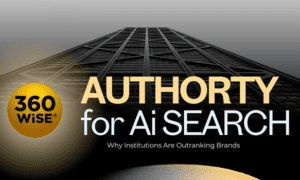A company relies on its people to achieve success, so empowering corporate staff skills by helping them enhance their skills should be a top priority for leaders. As per experts like Priority Management an empowered team that continuously builds their capabilities will drive greater innovation, productivity, and satisfaction.
Here is a guide to skill-building in a way that empowers employees:
Assess Existing Skills
Before creating development plans, assess current staff capabilities through skills matrixes, self-evaluations, peer feedback, or evaluations. Identify priority areas based on strategic goals, talent gaps limiting productivity, and upcoming projects requiring new competencies. Remember that soft skills like communication, emotional intelligence, and adaptability are as crucial as technical abilities.
Survey Employee Interests
Have staff complete surveys indicating their motivations, strengths, development areas, and responsibilities they want to grow into. This gives valuable insights for assignments allowing people to build the skills they are most eager to refine. It also boosts intrinsic motivation, a key ingredient for sustaining commitment to self-improvement.
Set Stretch Goals
Collaborate with employees to define realistic yet ambitious development objectives that push limits. Agree on specific skills individuals want to attain within a 3-6 month timeframe through assignments, coursework and other means. Put goals in writing with definable metrics for easier tracking. Stretch goals prompt growth, achievement-orientation and inspirational mindsets.
Offer Multiple Learning Avenues
Not everyone learns the same way, so provide diverse formal and informal skill-building channels including online courses, mentoring programs, job exchanges/shadowing, reading lists, case study analyses, lunch-and-learns and more. Multi-modal learning better accommodates different styles and backgrounds. Unique solutions spark excitement around development.
Incorporate On-the-Job Training
Real-time coaching and feedback as employees attempt new skills makes lessons stick better than conventional lectures alone ever could. Structure tasks purposefully to put recently gained knowledge into practice. For example, have someone who attended a data analytics workshop compile reports afterward. Apply coaching and support during critical skill-building windows.
Set Aside Self-Directed Time
Build schedules with windows for employees to direct their own advancement by researching special topics, taking online classes, attending conferences chosen by them and engaging mentors. Without protected time carved out for exploration, people struggle upholding development initiatives amidst packed calendars. Self-guided pursuits empower passion.
Offer Tuition Reimbursement
Alleviating financial barriers to education opens doors enabling staff to access specialized skills with big potential impacts. Offer to cover some costs of advanced coursework or accreditations related to current roles or future opportunities so people can access premium training they otherwise may not.
Reward Skills Applications
Positive reinforcement conditions behaviors so employees actively apply emerging skills once gained. Recognize examples of successful skills usage through awards, emails praising applications in notable instances and mentioning new expertise in meetings. Highlight when promotions result from skill gains. Reinforcement incentivizes maximum ROI on development.
Showcase Successes
Make realized competency gains visible by providing opportunities for staff to demonstrate newfound skills before peers and leaders through presentations, heading projects utilizing upgraded techniques or similar. Public sharing allows people to inspire colleagues while getting recognized as resident experts in key areas. Momentum builds as skills applications spread.
Link Skills to Incentives
Connecting development directly with performance evaluation criteria and related compensation/bonuses spurs participation. Establish a system where pay and promotions reflect utilization levels of skills learned. People expend more effort improving capabilities that directly impact their income and career advancement trajectory.
Conclusion
Empowerment requires investing not just in skills but also in people’s belief they can put those upgraded skills into meaningful action. Following these best practices develops staff competencies while fueling the confidence, motivation and opportunity to fully leverage enhanced capabilities. The result is an empowered workforce achieving extraordinary outcomes.





























